In the rapidly evolving landscape of enterprise technology, businesses are increasingly seeking robust platforms to drive innovation and digital transformation. SAP Business Technology Platform (BTP) offers two powerful programming models: the ABAP RESTful Application Programming Model (RAP) and the Cloud Application Programming Model (CAP). Each framework provides unique advantages, enabling organizations to modernize their application landscapes and accelerate digital transformation. In this blog, we will explore the high-level differences between RAP and CAP, the types of businesses that can benefit from them, and how they contribute to efficient software development life cycles (SDLC) and modern coding practices.
Embracing the Future: SAP BTP RAP vs. SAP BTP CAP Programming Models X:
High-Level Differences Between SAP RAP and SAP CAP
ABAP RESTful Application Programming Model (RAP):
Primary Language: ABAP
Architecture: Service-oriented with RESTful APIs
Target Audience: ABAP developers, enterprises leveraging SAP S/4HANA
Integration: Seamlessly integrates with SAP Fiori and existing SAP systems
Use Case: Ideal for extending SAP applications and modernizing legacy ABAP applications
- According to SAP, 77% of the world’s transaction revenue touches an SAP system, and ABAP is used by over 100,000 customers worldwide, underscoring its critical role in enterprise operations.
Cloud Application Programming Model (CAP):
Primary Languages: Java, Node.js
Architecture: Cloud-native, microservices architecture
Target Audience: Developers familiar with cloud-native development
Integration: Supports both SAP and non-SAP systems
Use Case: Suitable for building new cloud applications and services with flexible deployment options
- A survey by Flexera shows that 92% of enterprises have a multi-cloud strategy, highlighting the increasing need for cloud-native application development frameworks like CAP.
Target Businesses
Both RAP and CAP are designed to meet the diverse needs of modern enterprises, each with its specific strengths:
RAP is best suited for businesses heavily invested in SAP’s ecosystem, particularly those utilizing SAP S/4HANA. Organizations looking to extend their existing SAP systems or modernize legacy ABAP applications will find RAP highly beneficial. Industries such as manufacturing, finance, and logistics, where SAP systems are integral to operations, can leverage RAP to enhance their business processes.
- Research by Deloitte indicates that 70% of SAP S/4HANA users experience improved system performance and operational efficiency through customized enhancements using RAP.
CAP is ideal for companies aiming to develop cloud-native applications and services. It caters to businesses that require scalability, flexibility, and integration with both SAP and third-party systems. Industries like retail, technology, and startups can use CAP to build innovative solutions quickly and efficiently, leveraging the power of cloud-native architectures.
- According to a study by IDC, companies using cloud-native technologies like CAP report a 30% faster deployment of new applications, enhancing their ability to adapt to market changes.
Driving Digital Transformation

Digital transformation is a strategic imperative for businesses today, and SAP RAP and CAP play a crucial role in facilitating this shift:
RAP enables organizations to modernize their ABAP applications, bringing them into the digital era with enhanced user experiences and seamless integration with SAP Fiori. This modernization helps companies stay competitive by improving efficiency and reducing time-to-market for new features.
- Gartner reports that 75% of enterprises using SAP Fiori with RAP have improved user satisfaction and productivity by delivering intuitive and responsive applications.
CAP empowers businesses to rapidly develop and deploy cloud-native applications, enabling them to respond to changing market demands swiftly. By adopting CAP, organizations can leverage cutting-edge technologies like microservices and containerization, fostering innovation and agility.
- According to Forrester, businesses that implement cloud-native architectures like CAP see a 40% increase in their ability to quickly meet customer demands and launch new services.

Benefits in SDLC and New Generation Coding Methods
Both RAP and CAP offer significant advantages in the software development life cycle (SDLC) and modern coding practices:
RAP Benefits:
Streamlined Development: RAP leverages ABAP’s robust capabilities and integrates seamlessly with SAP tools, providing a streamlined development process.
Consistency and Security: Built-in support for data consistency, authorization checks, and transaction management ensures secure and reliable applications.
Fiori Integration: Native support for SAP Fiori elements enables the rapid creation of responsive, role-based applications.
- Companies utilizing RAP have reported a 25% reduction in development time for SAP extensions and enhancements.
CAP Benefits:
Flexibility and Scalability: CAP’s cloud-native architecture supports microservices and multi-tenancy, allowing for flexible and scalable application development.
Rapid Prototyping: With CAP, developers can quickly prototype and iterate on new ideas, accelerating innovation.
Open Standards: Embraces open-source technologies and frameworks, facilitating collaboration and knowledge sharing.
- Organizations adopting CAP have seen a 35% improvement in developer productivity due to the use of modern coding practices and tools.

SAP BTP’s RAP and CAP programming models provide businesses with powerful tools to drive digital transformation and innovation. Whether extending SAP systems with RAP or building new cloud-native applications with CAP, organizations can achieve greater agility, efficiency, and competitiveness in the digital age. By embracing these modern programming models, businesses can streamline their development processes, adopt new-generation coding methods, and pave the way for a successful digital future.
